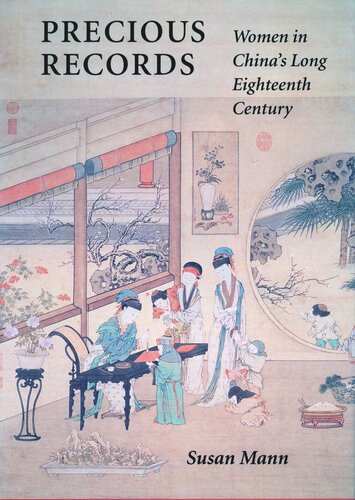

Most ebook files are in PDF format, so you can easily read them using various software such as Foxit Reader or directly on the Google Chrome browser.
Some ebook files are released by publishers in other formats such as .awz, .mobi, .epub, .fb2, etc. You may need to install specific software to read these formats on mobile/PC, such as Calibre.
Please read the tutorial at this link: https://ebookbell.com/faq
We offer FREE conversion to the popular formats you request; however, this may take some time. Therefore, right after payment, please email us, and we will try to provide the service as quickly as possible.
For some exceptional file formats or broken links (if any), please refrain from opening any disputes. Instead, email us first, and we will try to assist within a maximum of 6 hours.
EbookBell Team

0.0
0 reviewsThis first book-length study of gender relations in the Lower Yangzi region during the High Qing era (c. 1683-1839) challenges enduring late-nineteenth-century perspectives that emphasized the oppression and subjugation of Chinese women. Placing women at the center of the High Qing era shows how gender relations shaped the economic, political, social, and cultural changes of the age, and gives us a sense of what women felt and believed, and what they actually did, during this period. Most analyses of gender in High Qing times have focused on literature and on the writings of the elite; this book broadens the scope of inquiry to include women's work in the farm household, courtesan entertainment, and women’s participation in ritual observances and religion. In dealing with literature, it shows how women's poetry can serve the historian as well as the literary critic, drawing on one of the first anthologies of women's writing compiled by a woman to examine not only literary sensibilities and intimate emotions, but also political judgments, moral values, and social relations. After an introductory chapter that evaluates the historiography of Chinese women, the book surveys High Qing history, charts the female life course, and discusses women's place in writing and learning, in entertainment, at work, and in religious practice. The concluding chapter returns to broad historiographic questions about where women figure in space and time and why we can no longer write histories that ignore them.